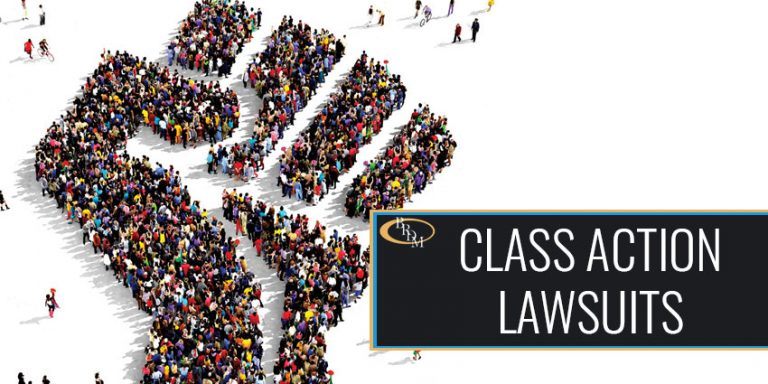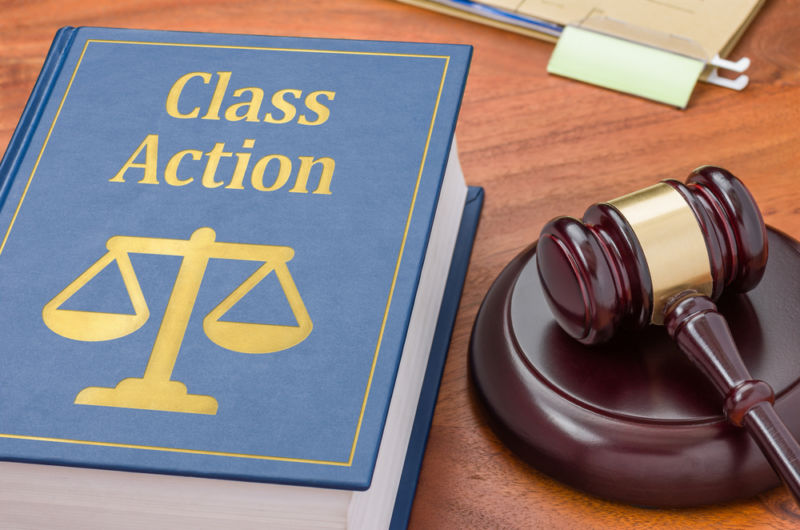Insights right into the Future FinTech Class Action Lawsuit: Keep Informed
Wiki Article
Comprehending Course Activity Legal Actions: A Comprehensive Overview
Course activity lawsuits have actually come to be significantly common in today's legal landscape, shaping the method people seek justice against effective corporations. In this detailed overview, we will explore the details of class action claims, consisting of the types of cases that can be gone after, the steps entailed in submitting a suit, and the benefits and disadvantages of seeking cumulative lawful activity.What Is a Class Action Suit?
A class activity legal action is a legal proceeding in which a group of people jointly brings a claim against a defendant or offenders for comparable injury or misbehavior. This kind of lawsuit allows a large number of individuals that have experienced a comparable damage to join forces and go after legal activity with each other, as opposed to filing individual suits. Class action legal actions are typically utilized in situations where the harm or misdeed impacts a big group of people, such as product liability situations, environmental pollution cases, or situations involving customer scams.
In order for a legal action to be certified as a class action, specific requirements must be met. These requirements usually include numerosity (a lot of possible class participants), commonness (common inquiries of legislation or reality), typicality (the cases of the depictive parties are typical of the course), and adequacy of representation (the rep parties will rather and adequately protect the interests of the course) Once a course action claim is licensed, notification is provided to prospective class participants, who after that have the option to sign up with the suit or opt-out if they wish to seek their own individual insurance claims.
Types of Course Action Suits
There are numerous classifications of class activity claims that encompass a vast array of lawful issues and markets. One typical kind is consumer course activities, which include insurance claims made by a group of customers versus a company for false marketing, defective items, or unreasonable company methods. These legal actions usually seek compensation for the afflicted customers and look for to hold the firm responsible for its actions.One more category is protections course activities, which are brought by investors against a company for supposed safeties fraudulence. Future FinTech class action lawsuit. These legal actions typically include insurance claims of misleading statements or omissions in the business's monetary statements or disclosures, which triggered the financiers to endure financial losses
Employment class actions are also common, including insurance claims made by a group of employees versus their company for offenses of labor regulations, such as discrimination, wage and hour violations, or wrongful termination. These lawsuits look for to shield the rights of staff members and ensure reasonable therapy in the work environment.

Steps Included in Filing a Course Activity Suit
Class activity suits need a certain set of steps to be followed in order to efficiently initiate the lawful process. The first action is to identify the potential course participants who have comparable cases see or complaints against the defendant. This entails carrying out detailed research study and event proof to sustain the claims. As soon as the class participants are recognized, the next action is to assign a lead plaintiff or course agent who will certainly act upon part of the entire course. The lead complainant will function carefully with a knowledgeable lawyer who specializes in course action lawsuits.After the lead plaintiff is assigned, the next action is to submit a grievance with the court. The issue details the allegations versus the offender and the relief looked for by the class. It is essential to make certain that the complaint satisfies all the lawful demands and plainly states the insurance claims of the course participants.
Once the issue is filed, the court will certainly evaluate it and establish if it meets the required standards to proceed as a class action claim. If the court approves the class qualification, notification will be sent to all possible course members educating them concerning the legal action and their rights to participate or opt-out.
Following the course certification, the case will proceed through the discovery stage, where both events exchange appropriate details and evidence. This may entail depositions, interrogatories, and document demands.
Benefits and Drawbacks of Class Action Lawsuits
One of the key benefits and downsides of going after a class activity suit exists in its prospective to offer cumulative resolution for a team of individuals with comparable insurance claims against an offender. The main advantage of a course action lawsuit is that it permits individuals with tiny insurance claims to sign up with together and take on an effective accused.However, there are likewise disadvantages to course activity lawsuits. Considering that the lead plaintiff stands for the entire course, there is a threat that their passions might not align with those of all class members. In some cases, the damages awarded in a course activity lawsuit might be separated amongst a large number of class members, resulting in fairly little payment for each individual.
Recent Site Class Action Suit Cases
In recent years, several considerable class action suit cases have emerged, setting criteria and forming the landscape of cumulative lawsuit. These site situations have highlighted various issues and caused significant negotiations, emphasizing the power of course activity suits in seeking justice and holding companies answerable.One remarkable situation is the Volkswagen "Dieselgate" detraction, where the car manufacturer confessed to setting up software application in their vehicles to rip off on discharges examinations. This instance led to a course action lawsuit filed by affected customers, causing a $14.7 billion settlement. This site case not only highlighted company deception yet likewise brought focus to the environmental influence of such actions.
An additional considerable case is the Johnson & Johnson baby powder lawsuits. Thousands of claims were filed against the firm, alleging that their talc-based article source products created ovarian cancer and mesothelioma cancer. These situations resulted in considerable court judgments, with the highest being $4.7 billion. Archer-Daniels-Midland class action lawsuit. This lawsuits has actually elevated recognition about product safety and the obligation of business to give accurate info to consumers.
In addition, the opioid situation has actually also resulted in many course activity lawsuits. Pharmaceutical drug stores, suppliers, and companies have actually dealt with lawful activity for their affirmed function in fueling the epidemic. These cases aim to hold these entities responsible for their actions and seek compensation for the areas affected by the crisis.
These current spots situations demonstrate the significance of class action suits in attending to business wrongdoing and providing justice for affected individuals. They offer as a suggestion of the power of cumulative legal action in holding effective entities responsible and seeking reasonable settlement for those damaged.
Verdict
Finally, class action lawsuits provide an avenue for people to seek justice and payment for extensive harm created by an accused. While they have their benefits, such as performance and cost-effectiveness, there are additionally drawbacks, such as possible delays and minimal private control (Future FinTech class action lawsuit). Current landmark situations have demonstrated the value of course action claims in addressing various concerns, highlighting the value of this lawful device in making sure accessibility to justice for a multitude of individualsThese demands normally include numerosity (a huge number of prospective class members), commonness (typical questions of legislation or reality), typicality (the insurance claims of the depictive celebrations are typical of the course), and competence of representation (the rep celebrations will fairly get redirected here and appropriately secure the passions of the class) When a course activity claim is certified, notice is provided to potential course members, who then have the alternative to join the claim or opt-out if they want to pursue their own individual claims.
Once the class participants are identified, the following step is to assign a lead complainant or course agent who will act on part of the whole course. Considering that the lead complainant represents the entire course, there is a risk that their interests might not line up with those of all course members. In some situations, the damages granted in a class activity lawsuit might be split amongst a huge number of class members, resulting in relatively small compensation for each individual.
Report this wiki page